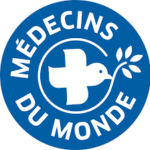HUMANITARIAN NEEDS ASSESSMENT OF THE MIGRANT POPULATION TRANSITING ON THE PASTO-IPIALES ROUTE, IN NARIÑO.

The information below resulted from a needs assessment carried out by Universidad Mariana, on behalf of Doctors of the World. The assessment is focused on the migrant population from Venezuela (caminantes), transiting on the Pasto-Ipiales route in Nariño, Colombia. The full report is linked below.
Context
Colombia shares 2,200km of border with Venezuela, leading to frequent migratory flows between both countries. Since 2015, at least 5.1 million Venezuelans have left their country. Amidst this complex migration crisis, Colombia has been the main country of reception for Venezuelans and also the main transit country for those heading to other states in the region. There are currently at least 1.7 million Venezuelans in the Colombia.
In addition to the above, Colombia also shares a 586km land border with Ecuador, which the migrant population passes through when heading to other Andean states as well as countries at the south of the continent such as Chile, Uruguay, Paraguay and Argentina. Those entering Colombia comprise Venezuelan nationals, Colombian citizens who had migrated to Venezuela for economic reasons or due to the armed conflict, and are now returning to their country, or mixed families. Among these groups, include people with international protection needs and critical humanitarian needs..
According to information from Migración Colombia, in September 2020 there were at least 1.7 million Venezuelans in Colombia. And according to the DANE, as of 2021 there are now 2.2 million people originating from Venezuela in Colombia. Of these migrants, 5 in every 10 have irregular status, a situation which reinforces barriers to accessing goods, services and livelihoods.
Out of the total Venezuelan population, 13,930 were residing in Nariño. However, according to the detection of Facebook connections analyzed by iMMAP, in August 2020, 47,511 connections by the Venezuelan population were identified in the department.
Due to the restrictions imposed by both the Government of Colombia and the Government of Ecuador in March and April 2020 to mitigate the spread of COVID-19, lasting until May 2021, the humanitarian situation of the migrant population has deteriorated. International border closures, the implementation of additional controls and restrictions around economic activity have led to many people who were transiting from Venezuela through Colombia towards Ecuador to seek refuge in interim municipalities.
Methodology
Universidad Mariana surveyed 974 transiting migrants coming from Venezuela on behalf of Doctors of the World. The surveys were conducted between March and May 2021 in the El Remolino - Pasto - El Pedregal - Ipiales corridor, in the department of Nariño, Colombia.
12 surveyors took part in the survey.
The surveyed population mostly comprised young men, between 18 and 38 years old. 70% of those surveyed were men, 29.8% were women and 0.2% transgender.
The context of migration flows
of the people surveyed had entered using irregular routes.
Of those who entered using regular routes (15%),
- 5 in every 10 entered through the Simón Bolívar International Bridge (Cúcuta).
- 3 out of every 10 through the José Antonio Páez International Bridge (Arauca).
- 1 in 10 through the Paraguachón Immigration Checkpoint (La Guajira).
Time spent in Nariño as a percentage

No Data Found
At the time of the survey, 94% of the population surveyed had spent less than one week in Nariño. 5% less than a month, but more than a week and 2% more than one month.
Amongst the surveyed population, 5 in 10 left due to a lack of livelihood, 4 out of every 10 owing to a lack of sufficient income, and 1 in 10 left due to food scarcity. Other reasons mentioned included insecurity, the country's political situation, family matters and health needs (treatment or medicine).
Motivo de salida de Venezuela (%)

No Data Found
A majority of those surveyed (51%) were heading to a destination country other than Colombia. 45% were planning to travel to another country in the region, such as Ecuador or Peru, whilst others were planning to reach Chile (7%), Uruguay, Argentina, Brazil or Canada (<0%)
For 36% of people, Colombia was the target destination (1% were already in their destination city). 9% were seeking to return to Venezuela, and 4% were still unsure of their destination.
Lugar de destino

No Data Found
The main motivation for choosing the destination was family recommendation (39%), seeking employment (35%), recommendation from friends (12%), work offer (7%), familiarity with the destination (5%), and security or seeking humanitarian aid at 1% each.
Amongst those intending to remain in Colombia, 57% chose the city according to recommendations from their friends or family and 31% to look for work. 39% were heading to another country on the basis of a family or friend's recommendation and 38% to search for employment.
Main motives for choosing the destination
Ciudad en Colombia

No Data Found
Retornar a Venezuela

No Data Found
Otro País

No Data Found
Amongst those who are going to return to Venezuela, 39% are doing it because of family recommendation, which coincides with the information that came out of the needs assessment led by the GIFMM of the in-destination population. The main reason for wanting to return (4%) is to reunite with family or housing.
In terms of those transiting, 13% travel alone, 23% travel with other 'caminantes', 44% travel with family and 20% with friends.
Humanitarian Needs
The main needs identified by the in-transit population surveyed consist of employment or generating income (76%), housing (49%), food (54%), access to healthcare for 24%, 18% mentioned documentation, 3% education and 1% law.
Principales necesidades

No Data Found
Necesidades más Urgentes

No Data Found
Although overall there are no significant differences between the needs expressed by men and women regarding the urgency of personal or family situations, there are some subtle differences in the report. Both men and women believe the family unit represents an urgent need (68% and 62% respectively), however, women expressed urgency regarding boys, girls and adolescents in situations of risk (24%) and women in situation of risk (28%) (may be because they are women themselves) more often than men.
In their own case, or their family's, 15 per cent of men consider legal or physical protection to be urgent.
Moreover, when the survey was conducted, food was considered the greatest need (73%), followed by clothing (56%). For women, mainly sanitary towels (44%)
Necesidades más Urgentes

No Data Found
Sectoral Needs
- Protection
- Socio-economic integration
- Housing
- FSN
In terms of perception of risk in Colombia, 4 in every 10 people surveyed consider discrimination and crime to be a risk and 1 in 10 violence. These perceptions were the same for both men and women. However, in response to the question: Do you feel at risk?, 87% of women responded yes, whilst 78% of men feel the same way.
Riesgos

No Data Found
Violencia

No Data Found
Also, in term of experience of violence on the route, although both 3 out of every 10 men and women have suffered aggression on their journey, women are more likely to experience psychological violence (55%) and sexual violence (8%). Men have been more likely to suffer physical violence (43%).
Entre la población caminante encuestada, 9 de cada 10 de las personas tiene un estatus irregular. Entre quienes viajan con niños, niñas y adolescentes (31%), 6 de cada 10 niñas y niños tienen partida de nacimiento, 1 de cada 10 tienen cédula venezolana o registro civil y 1 de cada 10 no tiene ningún documento.
Documento de Identidad

No Data Found
Los principales medios de vida de las personas encuestadas son las donaciones de particulares (65%), la ayuda humanitaria (38%), el trabajo informal (33%) y en menor medida el apoyo de familiares, ahorros o el empleo formal.
Medios de Vida

No Data Found
Nivel Educativo

No Data Found
Frente a las perspectivas para quienes tienen la intención de permanecer en el país, entre las mujeres entrevistadas es más frecuente tener niveles educativos más altos que los hombres el 8% de las mujeres tiene estudios universitarios, mientras en los hombres solo el 6%. Así mismo el 29% de las mujeres solamente tiene estudios primarios, y el 34% de los hombres está en esta situación. En ambos casos el 4% no tiene ningún nivel educativo.
La población encuestada está viviendo o alojándose principalmente en contextos urbanos (48%) y peri urbanos (48%), solo el 4% se estaba alojando en un contexto rural al momento de la encuesta. Asimismo, la mayoría de la población se encuentra en situación de habitación de calle, el 79% de las personas respondieron que están quedándose en espacios públicos, seguido de familias de acogida (9%), albergues temporales (7%), vivienda en arriendo o paga diario (4%) y edificios multiusos (1%).
Lugar de Vivienda

No Data Found
For the purpose of food security of the transiting population, of those surveyed 25% each once a day, 56% have two meals per data and 19% have 3 meals per day.
The quality of food being consumed is low for 57% of people, consuming mainly coffee, bread and packets, amongst other food. 37% consume food of medium quality, such as rice, grain, flour, without animal protein. 7% have a diet which includes protein during the trip.
Cantidad de veces que consume alimentos

No Data Found
Health needs
Mental health
When exploring the emotional state of those surveyed, 52% of people indicated negative emotions. Amongst these emotions, the most reported were sadness (21%), distress (18%) and boredom (11%).
A sense of sadness (28%) and a sense of distress (22%) are more common amongst women.
Men have received mental health attention (35%) more often (43%).
¿Cómo se siente emocionalmente?

No Data Found
Sexual and reproductive health
71% of those surveyed had not used any method of contraception. A higher figure than that of men. Only 26% of men use a condom, which is the only method which they mentioned.
In the case of women, 11% have an implant, 7% have an intrauterine device, 4% use a condom, hormonal contraceptive injection or undergone surgical intervention. Three per-cent use contraceptive pills and 1% emergency contraceptive pills.
Amongst those surveyed in transit, 20% are aware of the conditions to access a voluntary termination of pregnancy, with more women (24%) being aware. Only 2% of women stated as having to access such a service.
Amongst the barriers identified by those trying to access such services include, unwarranted waiting times, refusal based on their migration status and discrimination due to their nationality. Half of women expressed that they received medical and emotional advice for the procedure.
¿Conoce la interrupción voluntaria del embarazo en los casos permitidos en Colombia?

No Data Found
¿Utiliza algún método anticonceptivo?

No Data Found
COVID-19
In terms of COVID-19, 1% of the population surveyed reported having had COVID, with 8% stating that they were unsure. Amongst those who reported having had COVID, 3 out of every 10 were attended to in healthcare institutions.
When asked about willingness of getting vaccinated, 45% of people are willing to get vaccinated, whilst 15% do not know and 40% would not get vaccinated against COVID-19.
¿Se vacunaría contra el COVID-19?

No Data Found
Health in general
In terms of access to healthcare services, 80% of those surveyed indicated that when in need they have not been attended in a hospital. This situation mostly affects people travelling in families or with friends. Notably, it is greater in the municipalities of Ipiales, Pasto and Taminango.
Out of the total number people travelling with children, 37% stated that infants have not fully completed the vaccination scheme.
Twenty per-cent of those surveyed reported that when faced with a health problem, they could get attended in a hospital, meaning 80% of people have not received the necessary attention. Only 2% have some form of health insurance, in a subsidised policy.
¿Usted o las personas que le acompañan ante un problema de salud pudieron ser atendidos en un hospital?

No Data Found
¿Los niños que viajan con usted tienen completo el esquema de vacunación?

No Data Found
Humanitarian Response
7 in 10 people surveyed have received some form of humanitarian response. Amongst those who have received humanitarian assistance, 85% have received food, 44% dignity kits, 25% shelter, 13% basic healthcare attention.
Women have received shelter more often than men. 31% of the women surveyed have received shelter as a response, whilst amongst men only 24%.
Tipo de intervención

No Data Found



